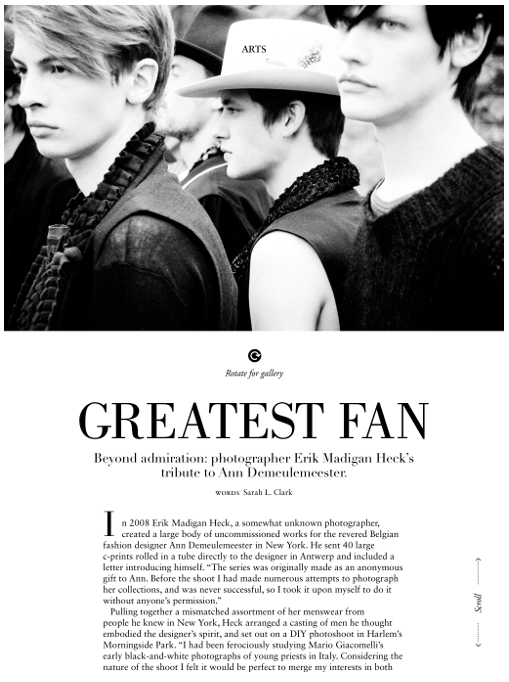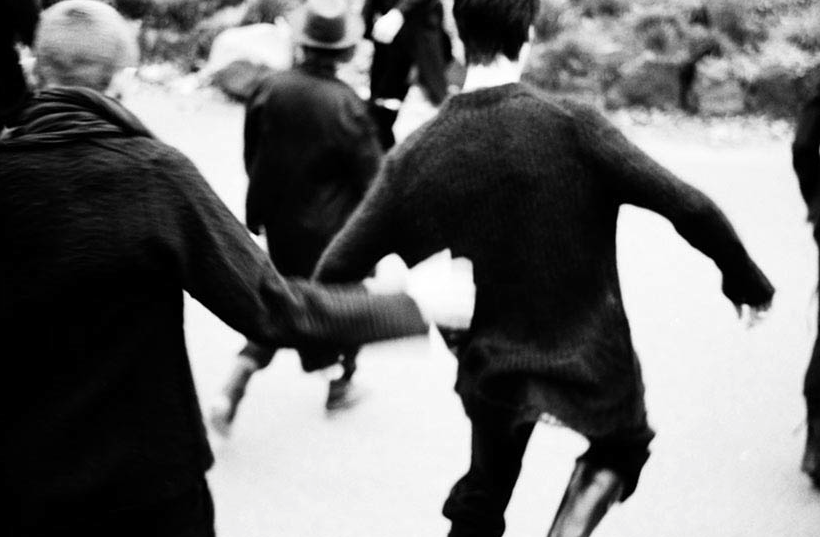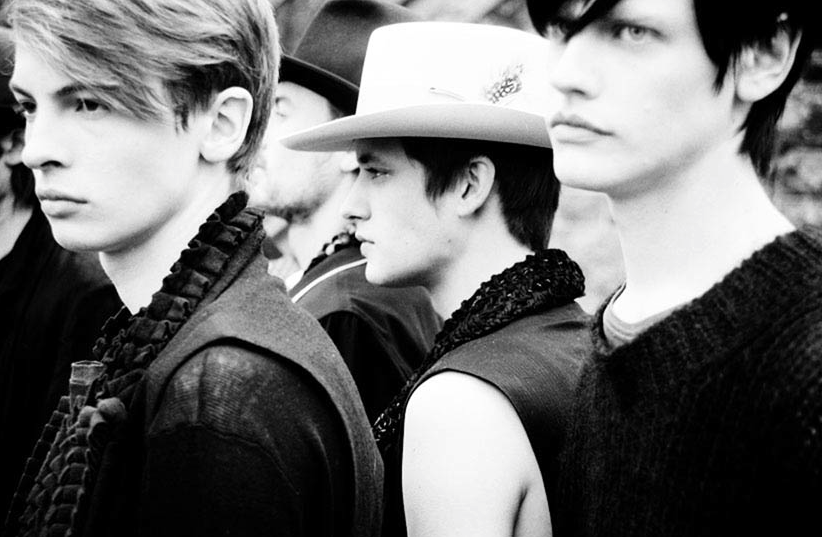Russh Greatest Fan
Beyond admiration: photographer Erik Madigan Heck's tribute to Ann Demeulemeester.
In 2008 Erik Madigan Heck, a somewhat unknown photographer, created a large body of uncommissioned works for the revered Belgian fashion designer Ann Demeulemeester in New York.
He sent 40 large c-prints rolled in a tube directly to the designer in Antwerp and included a letter introducing himself.
“The series was originally made as an anonymous gift to Ann. Before the shoot I had made numerous attempts to photograph her collections, and was never successful, so I took it upon myself to do it without anyone’s permission.”
Pulling together a mismatched assortment of her menswear from people he knew in New York, Heck arranged a casting of men he thought embodied the designer’s spirit, and set out on a DIY photo shoot in Harlem’s Morningside Park.
“At the same time I had been ferociously studying Mario Giacometti’s early black-and-white photographs of young priests in Italy. Considering the nature of the shoot I felt it would be perfect to merge my interests in both artists into a contemporary hybrid homage.”
The models dressed in Heck’s flat and walked to the location through West Harlem.
“When we arrived at the park my direction for the models was simply to walk around and casually talk to each other while I observed from afar. It was an awkward demand for young men who had never met. It became more of a social experiment than a traditional fashion shoot– a real time Lord of the Flies.”
Eventually the images made their way to Demeulemeester, marking the beginning of a long friendship.
“The shoot remains one of the most personal and inspired bodies of work I’ve created.”
In May this year Heck won the impressive 2013 ICP Infinity Award for applied fashion and advertising. This closely follows his appointment as the youngest photographer to shoot the famed Neiman Marcus Art of Fashion campaign in 2012.
Eddie Nunns, vice president, Neiman Marcus brand creative told Women’s Wear Daily at the time, “We wanted to pair up this season’s exquisite fashions with a true creative visionary. Erik Madigan Heck’s work blurs the lines between photography and art”.
These accolades group his work with that of Helmut Newton, Richard Avedon, Annie Leibovitz, and Bruce Weber – some of the most revered fashion photographers of the last century.
“The shoot remains one of the most personal and inspired bodies of work I’ve created.”
There are exhibitions celebrating his work at the Salone Internazionale del Mobile in Milan, the Museum für Angewandte Kunst Frankfurt, and Etro Soho Space in New York this year alone.
And all before his 30th birthday.
Moving between a painterly, colour saturated, style and classical black-and-white imagery, the photographer is aware a “style” can be the death of a photographer, even if it is necessary in a commercial sense. “I started out with painting when I was younger, then moved to black-and-white still photography in college. I have come back to photography with a colour approach that is much more primal and akin to how I started painting as a kid. I have many influences, but primarily I create the way my mother taught me how to paint a long time ago.”
On his colour work, Heck says, “I love the intensity you achieve with bombarding one singular colour over an image, and adorning a person in its full wraps. Colour creates emotional reactions, and I want my work to move people, so it’s only natural to use it to its extremities.”
Heck’s style is not typical of a fashion image-maker. And there’s a reason for it.
“I’m interested simply in creating work and I find the fashion world to be a freer place to do this than the art world. It’s certainly much less restricting on the work itself. Getting my MFA at Parsons [School of Design] taught me one valuable lesson. Stay as far away from the art world as possible.”
Parsons philosophy Professor Arnold Klein is Heck’s self-described, “brain mechanic” says, “all one has to do is compare Heck’s fashion photographs to what else goes by that name to see how free and unconditioned by its contents his vision really is. It is because of the integrity of his intuition that Heck’s photographs retain their individuality and self-consistency while remaining suggestive of those prior masters whose intuitions so curiously border his own.”
Of their relationship, Heck explains, “He helps me think through all levels of my work, articulate what I am trying to do, and why I’m doing it.”
The photographer’s next undertaking is a large project focused on the female form, from behind, throughout painting history. “A history of fashion from behind,” he says.
Heck is making a big impact on the fashion world. Ann Demeulemeester, though, is perhaps making the biggest impact on Heck. “She was not the beginning,” he says, “however she is the most important for me.”



